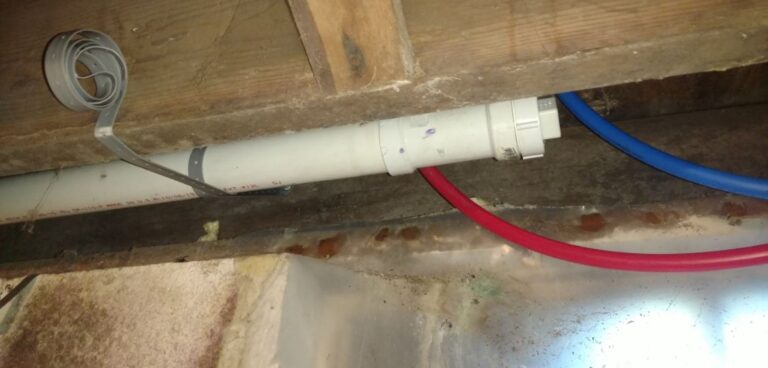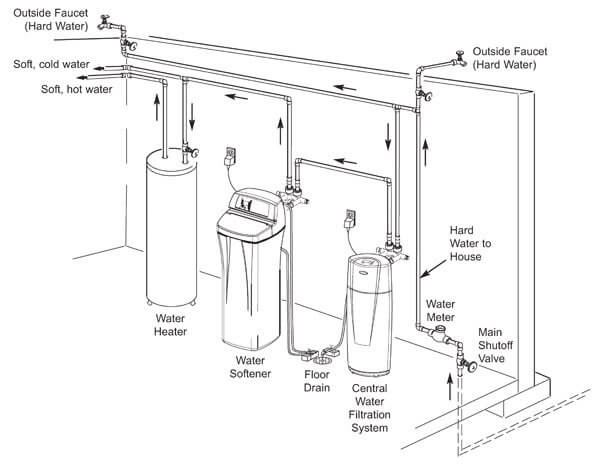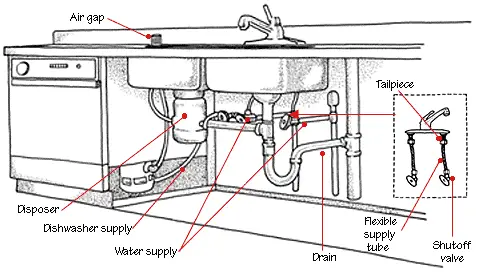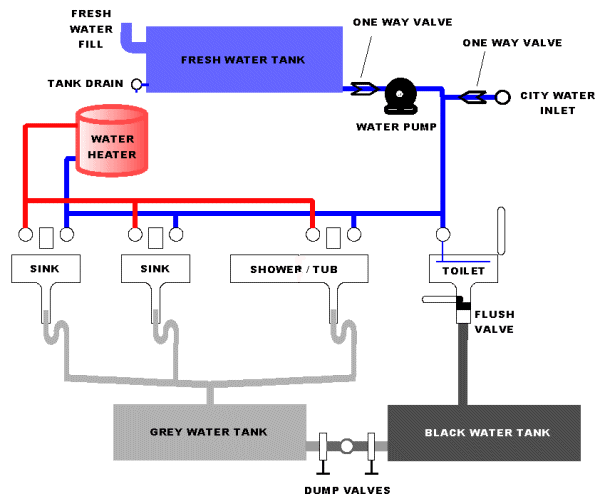What Is Soil Stack In Plumbing?
A soil stack is a plumbing fixture typically found in residential buildings that is responsible for carrying foul waste away from toilets and other sanitary fixtures, and into the sewer system. It is a vertical pipe that runs from the upper floors down to the basement, connecting with the sewer line. The soil stack is usually constructed of cast iron, copper, or PVC, and is a crucial component of any plumbing system.
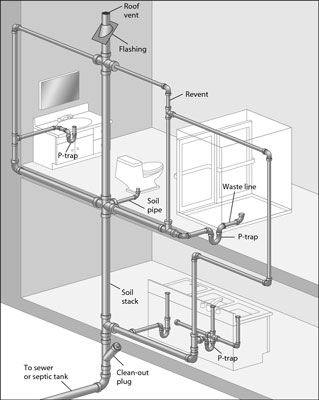
What is a Soil Stack?
A soil stack is a vertical pipe that carries the wastewater from toilets, sinks, showers, and other drains out of a building and into the sewage system. It’s an important component of a home’s plumbing system, as it prevents sewage and waste from backing up into the house. The soil stack must be properly vented in order to work correctly and prevent any hazardous gases from entering the home. It’s an integral part of keeping your home safe and functioning.
What is the Purpose of a Soil Stack?
A soil stack is a vertical pipe that is installed to remove waste water and sewage from a building. It is also known as a waste stack, a house drain, or a soil vent pipe. The purpose of a soil stack is to carry wastewater safely away from the building and deposit it into a sewer system or septic tank. The stack is typically made of plastic, metal, or clay and is larger than the other pipes in the plumbing system. It is designed to handle the increased pressure of wastewater. It also helps to prevent odors and the spread of disease-causing bacteria. A soil stack is an important component of any plumbing system and should be regularly inspected to ensure it is functioning properly.
What are the Requirements for a Soil Stack?
A soil stack is a plumbing pipe that connects the drainage from indoor appliances such as toilets and sinks to the outside sewer or septic system. It is important to have a properly installed and maintained soil stack to ensure that there are no blockages or leaks that can lead to health and safety issues. To ensure that your soil stack is properly installed, there are certain requirements that must be met.
First, the soil stack should be made of the correct material. PVC piping is the most common material used and should be rated for the job. It should also be the correct size for the job. A qualified plumber should be able to advise the best size for your system. Second, the soil stack should be connected to the outside sewer or septic system at the correct height. It should be connected at a height that is higher than the highest point of the system inside the building. Finally, the soil stack should be vented, in order to prevent blockages and to ensure that the system works correctly. A qualified plumber should be able to install a vent that meets the necessary requirements. Following these requirements will ensure that your soil stack is properly installed and maintained.
What are the Different Types of Soil Stacks?
Soil stacks are essential components of plumbing systems, used to deliver wastewater and sewage away from a building. Depending on the type of building in which they are installed, soil stacks can come in a variety of shapes and sizes. The main types of soil stacks include vertical soil stacks, horizontal soil stacks, and offset soil stacks. Vertical soil stacks are the most common type, running vertically from the ground up through the building and into the roof. Horizontal soil stacks run horizontally along a wall, often in the basement or attic of a building. Offset soil stacks are angled from the ground to the roof, and are generally used in taller buildings. All soil stacks must be installed in accordance with local building codes to ensure proper drainage and to prevent hazardous gases from entering the building.
How Are Soil Stacks Connected?
Soil stacks are an important part of a house’s plumbing system, as they are responsible for carrying waste out of the house and away from it. Soil stacks are connected to the other plumbing components in the house, such as baths, basins, and toilets, to create a continuous flow of wastewater. The connection between a soil stack and other plumbing components is typically made using a series of pipes and connectors, such as traps, vents, and fittings. It is important to ensure that the pipes are properly connected and sealed, as leaks can become a major issue in the home. It is also important to make sure that the soil stack is correctly connected to the main sewer line, as this will ensure that the wastewater is safely removed from the home. With proper installation and maintenance, soil stacks can provide a reliable system for removing wastewater from a house.
What Can Go Wrong with a Soil Stack?
A soil stack is an important part of any drainage system, however, if it is not installed or maintained properly it can cause a host of problems. These issues can range from foul odours, to blockages, to structural damage to the building itself. Poor installation can lead to water seeping in to the soil stack, which can cause corrosion and lead to blockages, while a poorly-maintained system can result in blocked pipes, overflowing water, and structural damage to the building it serves. To prevent such issues, regular maintenance and inspection of the soil stack is essential, as well as ensuring that it is installed correctly in the first place.
FAQs About the What Is Soil Stack In Plumbing?
Q1. What is a soil stack in plumbing?
A1. A soil stack is a vertical pipe in plumbing systems that carries wastewater and sewage from the toilet, sink, tub, and other fixtures to the sewer system or septic tank.
Q2. What types of materials are used to make a soil stack?
A2. Soil stacks are typically made from PVC (polyvinyl chloride) or ABS (acrylonitrile butadiene styrene) plastic, although some older homes may have soil stacks made from cast iron.
Q3. What is the purpose of a soil stack?
A3. The purpose of a soil stack is to provide a safe and efficient way of venting wastewater and sewage from the home to the sewer system or septic tank.
Conclusion
A soil stack is an important part of a plumbing system. It is the main pipe that carries wastewater from the toilets, sinks, and other fixtures to the sewer or septic system. It is typically made of PVC or cast iron and is designed to carry wastewater away from the home without any problems. A properly installed and maintained soil stack can ensure that your plumbing system works correctly and efficiently.


